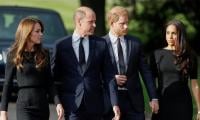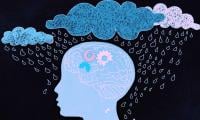Have liberals failed us? - Part I
The failure of liberalism in the developed world was openly pronounced with the election of Donald Trump in 2016. Hilary Clinton’s spectacular loss was partly blamed on the inability of the American liberal class to understand the true pulse of America. Or so we were told.
Since then, the rise of far-right and alt-right movements around the world have been eerily coincidental in countries which are seemingly considered liberal. Violent push backs against refugees and asylum-seekers from war-torn nations. Police brutality and racism against people of non-white origin. Crackdowns on rights supporters. These are just some examples of the rising intolerance in many Western nations over the last few years.
Is it the failure of the liberal populations in these apparently progressive countries, or the failure of the idea that liberalism is the only way to correct these injustices that has led to this? And if so, what hope is there for the rest of us?
Liberalism is commonly defined in political philosophy as an idea which brings together freedom, consent and equality of all before the law. It promotes individual rights, democracy, free trade and an openness to new ideas, among others. Over the years, it has included in its ambit gender and racial equality, open borders and recognition of individual identity.
A liberal likewise is identified as anyone who supports any or all parts of this definition, and there is a range of liberal belief systems. But the world today has clearly shown that liberal ideologies are fast failing even those who practise them.
In Pakistan too those who believe in equality of rights and freedoms of association are facing immense challenges in trying to influence or create equitable systems. And there are more than enough examples to show the sheer intensity of these challenges. From archaic practices like forced conversions and child marriages, to physical dangers such as rape and kidnapping, to rising religious conservatism, to an over-burdened financial system – the list is endless.
In contrast, there are very few national movements (not of the PDM variety) and they are nowhere near reaching critical mass to put pressure on addressing any of these challenges, which is something we at least see in other parts of the developing world, such as the way the George Floyd protests galvanized public opinion against racism.
The burden of this falls on those who believe that addressing these challenges fall under the protection of liberal values. Yet, so far, Pakistan’s liberals have been unable to create any momentum that can push even a conversation forward on any of our challenges to equality and freedoms. What’s more, there are rising contradictions and confusions in who we identify as a liberal, in a country where there is such a stark contrast between rich and poor. And this matters – because traditionally, liberalism in Pakistan and other such countries, has always been associated with wealth. It is only the rich who possess liberal values, because they have had access to the best education and opportunities of thought. Everyone else is therefore unable to possess such values.
We know this is completely untrue, especially when looking at Pakistan. Liberal values of freedom and equality are not connected to wealth in any way. But in Pakistan, liberals have always been seen through the lens of class and social status. Take the comparison of public versus private universities. The former are perceived as poorly managed state-run institutions with conservative values. The latter are seen as richly endowed private centres of learning afforded by the privileged few who actively believe in social justice. As a result, the former are allegedly “ill-liberal” and the latter supposedly liberal. No matter that both kinds of institutions may actually contain a mix of the two. The irony is that this never used to be the case. Public institutions like Karachi University were known for producing some of the country’s brightest and most liberal minds. Indeed, long before the onset of private higher education, such institutions are what laid the foundation for critical social and political thought in this country.
This illustration cuts right across Pakistan’s liberal vs conservative divide in which public space is seen as conservative and the private as illustrating the liberal ideal. Nothing could be further from the truth.
But in reality, there are several such dichotomies based on a number of different variables, that have done much to malign liberals and their causes in Pakistan.
Take the women’s movement. While there has been a welcome and needed resurgence of the demand for equality by a new generation of Pakistani women, still in nascent stages, some argue that it is limited to the more urban, entitled woman. The actual movements, they argue, are those led by Baloch and Hazara women activists, or those in smaller towns and cities, who are excluded from this ‘elitist’ urban movement. In actuality, each of these movements are worthy of merit and while each may be fighting for different types of rights, all firmly believe that improving the status of women in Pakistan is vital for our survival. And each movement is desperately needed to endorse that. But a divide is being created to show that one movement is liberal because it originates in a more affluent class, while the other does not.
On the other hand, some in this class are responsible for perpetuating the myth of the elite liberal (providing much needed ammunition to conservatives). For instance, the protest by the residents of the Defence Housing Authority in Karachi this past August, against the Cantonment Board Clifton’s dismal performance of protecting some of Karachi’s richest residential neighbourhoods from extreme flooding. The protest was small, but it clearly juxtaposed the concerns of the privileged few against those of the rest of the city who were in far worse condition, with no one to hear their woes. The fact that the DHA residents protest was legally faulted back at them through an FIR lodged by the executives of the Board further showed that even the wealthy elite were circumvented by an even more powerful political elite, after which the former fell silent.
To be continued
The writer is an independent specialist and researcher in international development, social policy and global migration.
-
 European Space Agency Hit By Cyberattack, Hundreds Of GBs Data Leaked
European Space Agency Hit By Cyberattack, Hundreds Of GBs Data Leaked -
 Elon Musk’s XAI Launches World’s First Gigawatt AI Supercluster To Rival OpenAI And Anthropic
Elon Musk’s XAI Launches World’s First Gigawatt AI Supercluster To Rival OpenAI And Anthropic -
 Google Adds On-device AI Scam Detection To Chrome
Google Adds On-device AI Scam Detection To Chrome -
 First Ocean Robot Launched To Monitor 'Category 5' Hurricanes
First Ocean Robot Launched To Monitor 'Category 5' Hurricanes -
 Gwyneth Paltrow Gets Honest About Filming Intimate Scenes With Timothee Chalamet
Gwyneth Paltrow Gets Honest About Filming Intimate Scenes With Timothee Chalamet -
 Duke's Peace Talks With King Charles, Prince William: 'Ball Is In Harry's Court'
Duke's Peace Talks With King Charles, Prince William: 'Ball Is In Harry's Court' -
 New Research Finds Back Pain May Disrupt Men’s Sleep Quality Later In Life
New Research Finds Back Pain May Disrupt Men’s Sleep Quality Later In Life -
 Jennifer Lopez Still 'very Close' With Ben Affleck's Children, Invites Them To Vegas
Jennifer Lopez Still 'very Close' With Ben Affleck's Children, Invites Them To Vegas -
 Matt Damon Gets Honest About Netflix's Way Of Storytelling
Matt Damon Gets Honest About Netflix's Way Of Storytelling -
 Prince William, Harry Rift Still 'simmering Away'
Prince William, Harry Rift Still 'simmering Away' -
 What's Buzzing Around TikTok's 'PineDrama' App: Everything You Need To Know
What's Buzzing Around TikTok's 'PineDrama' App: Everything You Need To Know -
 Who’s Next After Australia’s Under-16s Social Media Ban?
Who’s Next After Australia’s Under-16s Social Media Ban? -
 Do You Have Depression Or Is It Just Monday Blues? Find Out Where Science Stands
Do You Have Depression Or Is It Just Monday Blues? Find Out Where Science Stands -
 Why Claude Is Gaining Momentum In Revolutionizing The AI Landscape
Why Claude Is Gaining Momentum In Revolutionizing The AI Landscape -
 Elon Musk Unveils Plans To Take Humanity To The Moon And Mars
Elon Musk Unveils Plans To Take Humanity To The Moon And Mars -
 Air Pollution May Play A Role In Prostate Cancer Risk, Experts Warn
Air Pollution May Play A Role In Prostate Cancer Risk, Experts Warn



